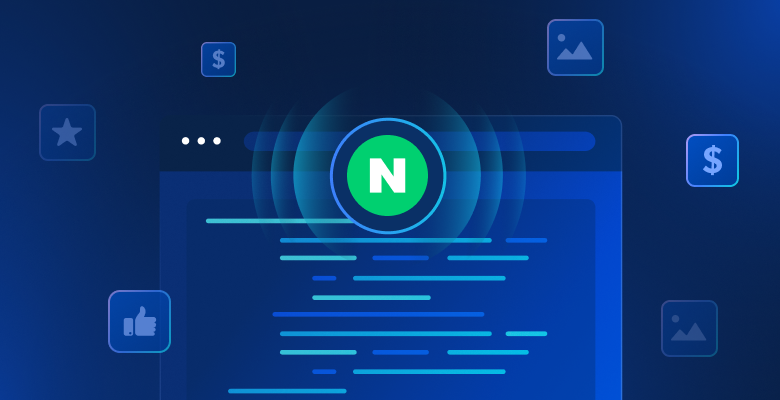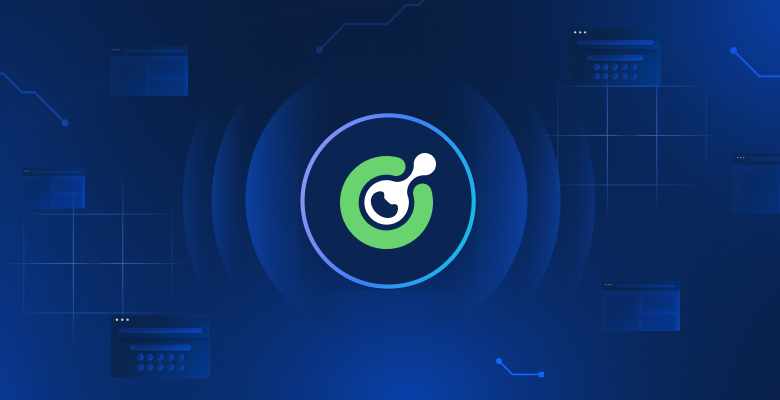Web scraping can be tricky sometimes, especially when websites are always changing and there’s so much different information to collect. This makes it hard for normal scraping methods to keep up and extract the data correctly. But, using Artificial Intelligence (AI) in web scraping can make this process a lot easier and more accurate.
In 2021 alone, 2.5 quintillion bytes (or 2.5 billion gigabytes) of data was created. Most of this data is not readily available, which means you need to scrape it from the internet to be able to use it for analysis and business decisions. While traditional web scraping methods can be used for this purpose, more advanced artificial intelligence (AI) web scraping tools can also be used.
AI web scraping uses machine learning (ML) techniques to extract data from websites. This is particularly important when you’re scraping dynamic websites or websites that employ advanced anti-scraping technologies. AI scrapers can analyze a web page’s document object model, identify its structure, and adjust themselves in case of a structure change.
In this article, you’ll learn about some of the limitations of conventional web scraping and how AI web scraping can help.
Conventional Web Scraping: What It Entails and How It’s Typically Carried Out
Conventional web scraping includes retrieving data from the internet and storing it in an analysis-friendly format. Broadly, the process starts with sending an HTTP request to the server of the website you’re scraping. Once the server returns the HTML of the page, the next step is to parse the returned HTML and extract the data you need. Then you can use the scraped data for various purposes, including training ML models or data analysis:

Limitations of Conventional Web Scraping
Conventional web scraping is incredibly useful. Without it, you’d have to settle for manual and incredibly time-consuming practices, such as copy-pasting data from the internet. However, as useful as it is, conventional web scraping also comes with certain limitations.
Inability to Adapt to Dynamic Websites
Often, when scraping websites, you’ll encounter websites with dynamic content. Such websites use AJAX to dynamically update the contents of their web pages, which means the web page is changed without it being reloaded. However, since web scraping works by sending an HTTP request to a server and downloading the returned HTML, the dynamically updated content won’t be found in this HTML, making it difficult to scrape.
Dynamic content is great for users because it helps with loading speed and more personalized recommendations. However, when it comes to conventional web scrapers, they can parse only the original HTML and they typically can’t process JavaScript. That means content that shows up following a user action, such as a click or a login, can’t be scraped conventionally.
Inability to Handle Complex Website Structures or Frequent Website Structure Changes
Most websites have different structures, some of which may be very complex. That means whenever you want to scrape a different website, or even different web pages on the same website, you’ll need to write different code.
To make matters more complicated, website structures may change frequently (eg websites may get different HTML structures or layouts). Whenever a website makes changes to its structure, the old web scraper likely won’t work anymore. Even relatively small changes to a website’s structure may cause the scraper to break. That means every time a website’s structure changes, you need to update the web scraper.
Lower Accuracy in Data Extraction
When an individual or a company scrapes data, usually, it’s because they have a use case for that data. But for the data to actually help, it needs to be accurate and reliable.
One way to ensure data accuracy is by utilizing the proper tools. These tools should be accurately designed and regularly updated and maintained. Conventional web scraping tools may have difficulties accomplishing this, given that any change to the website structure may affect the accuracy of the extracted data or even break the scraper altogether.
Choosing the right tool is only part of ensuring data accuracy. You also need to make sure that the data source is reliable and that the data is validated.
Limited Scalability and Flexibility
Conventional web scraping is relatively easy to implement on a smaller scale. This is because most of the issues related to conventional web scraping are less apparent on a smaller scale. It’s also easier to adapt your small-scale scraper if a website’s structure changes.
However, if your use case requires a large amount of data to be scraped or if you need to scrape multiple websites, this scale may be too large for the capabilities of conventional web scrapers.
Ineffective with Advanced Antiscraping Technologies
Websites such as Amazon or Google are very common targets for scraping. This can cause unwanted traffic and overload to their servers, which is why a lot of websites implement different mechanisms to prevent web scraping, such as IP blocking, CAPTCHAs, rate limits, and honeypot traps. These antiscraping technologies are continuously getting more sophisticated as a response to the increased sophistication of web scraping methods. Conventional web scraping tools generally don’t have the capabilities to deal with such sophisticated mechanisms on their own.
How AI Web Scraping Can Help
AI scraping offers numerous benefits over the traditional way of scraping web pages. With it, you’re able to more effectively deal with dynamic websites, websites that change frequently, and websites that use advanced antiscraping mechanisms.
Adapts to Dynamic Content
Unlike conventional web scrapers, AI-powered web scraping tools may be able to dynamically adapt to the structure of the web page being scraped. By analyzing the document object model of a web page, an AI scraper can autonomously identify its structure.
AI and adaptive scrapers can look at a web page as it’s displayed in the web browser. This is possible thanks to deep learning models, such as convolutional neural networks, which are specifically designed for computer vision and image recognition. This means AI scrapers don’t have to rely on the underlying HTML of the web page and can instead analyze the web page visually.
Deals with Websites that Undergo Frequent Structure Changes
AI scrapers are also useful when scraping websites that undergo frequent structure changes because they’re able to adapt to the changes on the website by themselves.
Improves Scalability
Additionally, using AI in web scraping makes the process more scalable due to the automation that’s made possible by ML. Such automation allows AI scrapers to scrape huge amounts of data, even if it’s from multiple sources or websites. This is particularly important for those dealing with big data and large data sets. For instance, if you want to train an ML model, you generally need a significant amount of data for the model to be useful.
Handles Advanced Antiscraping Technologies
Unlike conventional scrapers, AI scrapers can mimic human behavior, simulating a human’s browsing speed, click patterns, and mouse movements. This is important as it helps the scraper circumvent antiscraping mechanisms.
IP blocking and CAPTCHAs can also be overcome with the help of proxies. For example, Bright Data, a platform that allows you to turn websites into structured data, offers rotating proxies that you can use when scraping a website. With these proxies, you can rotate the IP addresses from which you send the requests. That means there won’t be too many requests from a single IP address, and the target website won’t detect any suspicious activity.
Enhances Efficiency and Speed
AI also speeds up the process of extracting data from a web page, given that you can extract data from multiple websites simultaneously. Not only is it faster, but implementing AI in web scraping also improves the accuracy of the process.
Conclusion
Conventional web scraping is helpful as it’s a viable way to extract data from the internet. However, it comes with certain limitations, including the inability to adapt to dynamic websites, difficulties with frequent changes of a website, and inefficiency when dealing with antiscraping mechanisms. Fortunately, AI web scraping overcomes a lot of those limitations and can handle dynamic content, sophisticated antiscraping techniques, and website structure changes with ease.
However, training your own AI web scraper is a complex and time-consuming task. Thankfully, you don’t have to create these AI web scrapers by yourself. Bright Data offers several tools that are indispensable when scraping the web, including proxies, which allow you to prevent your scrapers from getting blocked by a server. Bright Data’s Web Unlocker also allows you to unlock any website, even those with the most advanced antiscraping technologies, by mimicking human behavior, solving CAPTCHAs, performing automatic IP rotation, rendering JavaScript, handling cookies, and more. Moreover, Bright Data has a Scraping Browser API that provides browsers with built-in website unlocking.








